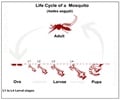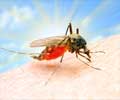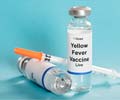A new study led by St. Jude Children's Research Hospital investigators disproves reports that well-fed children are more vulnerable to the dengue virus. Mosquitoes spread the virus, which can cause severe flu-like symptoms and sometimes lethal complications.
Malnourished children are just as likely as their well-fed counterparts to develop life-threatening complications following repeated infections with the dengue virus, according to work from researchers at St. Jude and Hospital Nacional de Niños Benjamin Bloom in El Salvador.Although infectious diseases often pose the greatest threat to children with an inadequate diet, study lead author Gabriela Maron, M.D., a St. Jude Infectious Diseases clinical fellow, said earlier reports from health providers in regions of the world where dengue is common suggested that the infection hit well-nourished children the hardest. Researchers have noted that one possible explanation is that even mild malnutrition blocks the immune system from launching the strong inflammatory response linked to severe dengue infection.
“There must be subtle differences between patients, possibly related to their immune response,” Maron said. St. Jude investigators are now collaborating with colleagues in El Salvador to see if differences in gene expression might identify those at high risk for severe infection.
The study was published in a recent issue of the American Journal of Tropical Medicine and Hygiene.
Health officials estimate about one-third of the world’s population is at risk for infection with one of the four dengue viruses, including a high percentage of children living in the Caribbean, Central and South America. “Even in the U.S., cases are reported along the southern border with Mexico,” Maron said. “Without a vaccine to prevent infection, international flights and the overall shrinking of the planet mean it could become an even more important problem for U.S. health officials.”
An individual’s first dengue infection typically produces mild symptoms. But later infections can lead to life-threatening dengue hemorrhagic fever and dengue shock syndrome, which are associated with internal bleeding and a dangerous reduction in the platelets that help blood clot. The challenge for health providers, especially those in countries where resources are scarce, is to rapidly identify patients at higher risk for complications.
Advertisement
Those results were compared with an international sample of children of the same age compiled in the World Health Organization’s standardized database. Roughly the same proportion of children in each of the study’s groups qualified as either underweight, overweight or stunted, a possible sign of chronic malnutrition. There was also no difference in the average BMI of study participants, whether healthy or ill.
Advertisement
Source-Newswise
SRM














